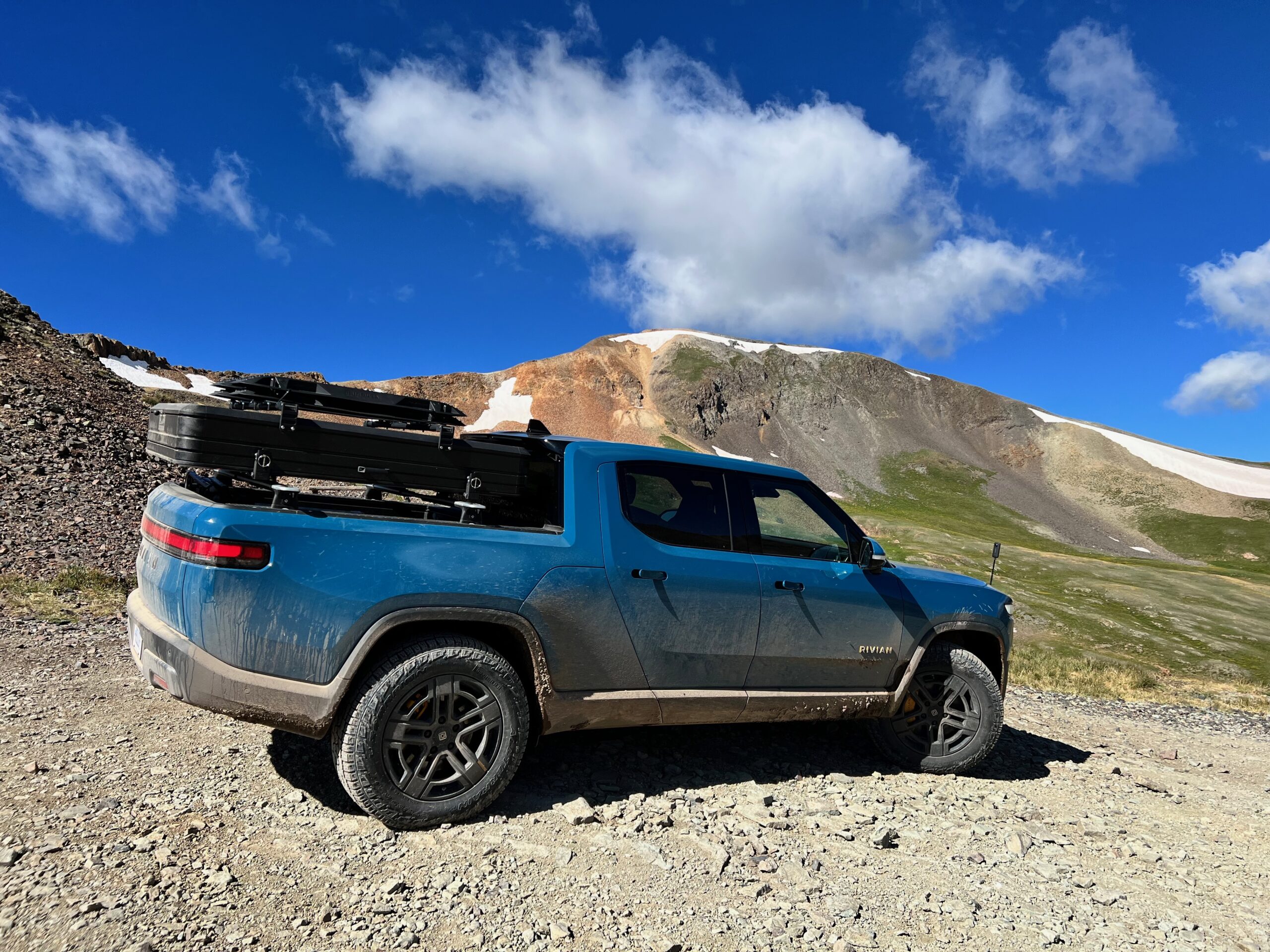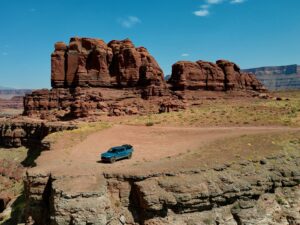Imagine heading out on a solo journey, overlanding Colorado in an electric vehicle, to conquer all 681 miles of the Colorado Backcountry Discovery Route (COBDR) Sound impossible? I set out to put my Rivian R1T to the ultimate test and show you that it is, without a doubt, possible.
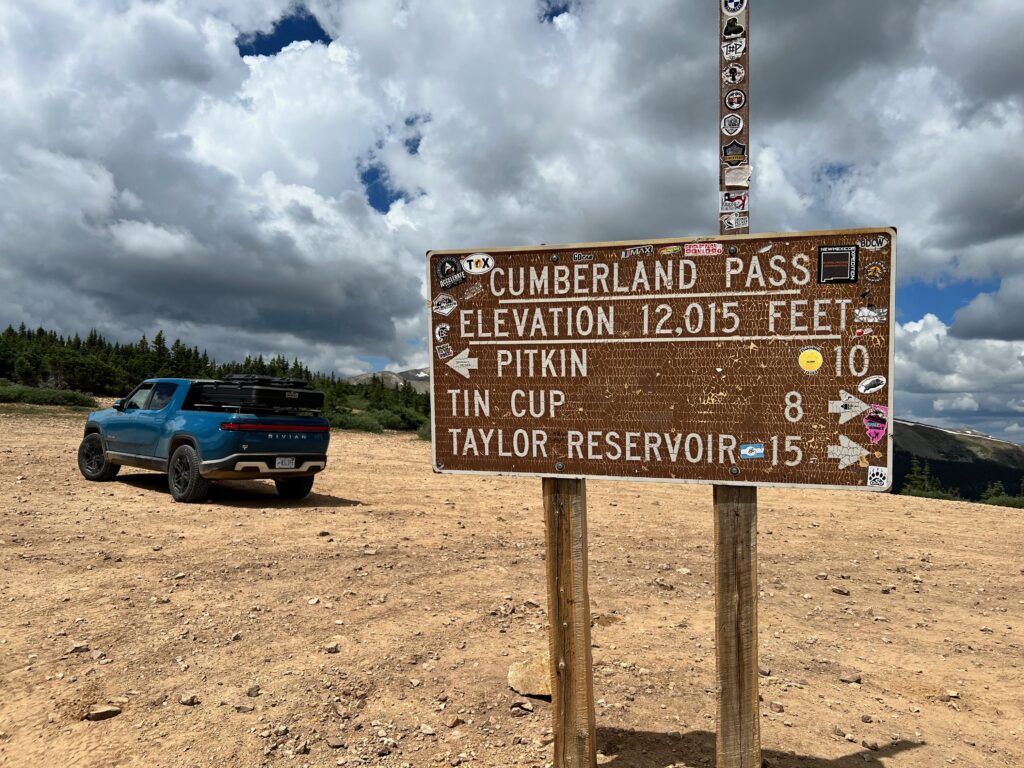
Join me on an exciting electric adventure through Colorado’s stunning landscapes. I will be pushing the boundaries of technology and showcasing the impressive capabilities of the Rivian R1T across some of the most challenging terrains. This isn’t just a road trip; it’s a journey into the future of overlanding.
Introducing the COBDR
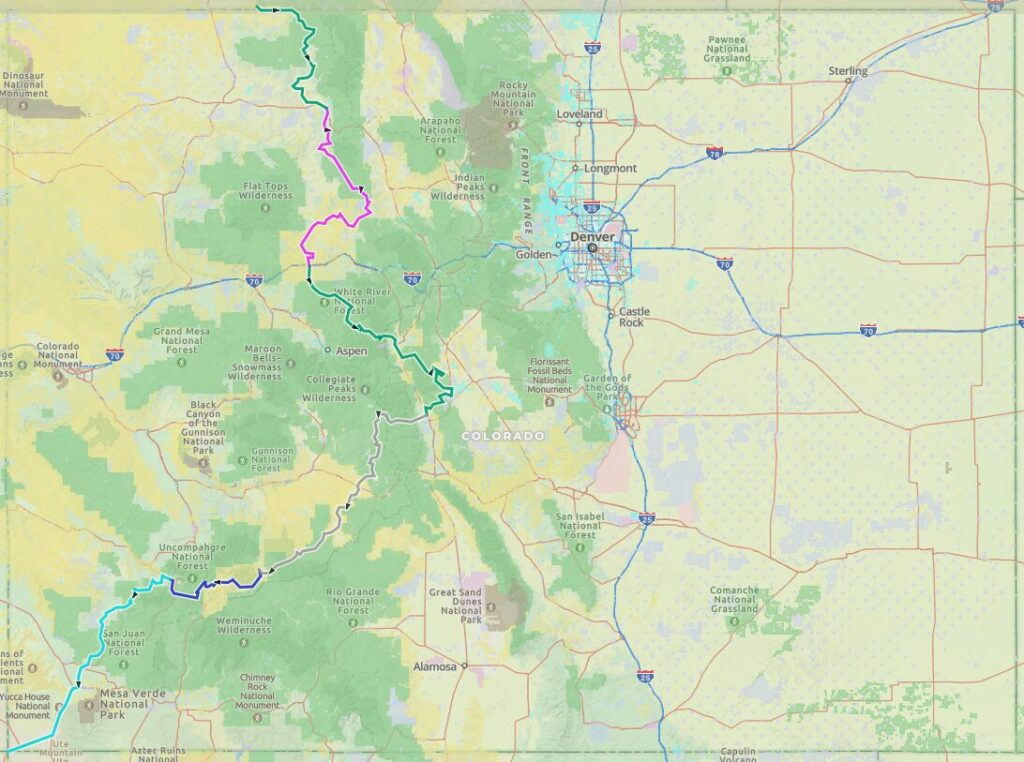
Overlanding Colorado: An Off-Road Paradise
The Colorado Backcountry Discovery Route (COBDR) is truly an off-road paradise for overlanders, spanning over 681 miles and showcasing the diverse landscapes of the Rocky Mountains. Starting at the Four Corners and extending north to the Wyoming border, this epic route offers a challenging test of technical skills while providing an unparalleled appreciation for the unbridled beauty of nature.
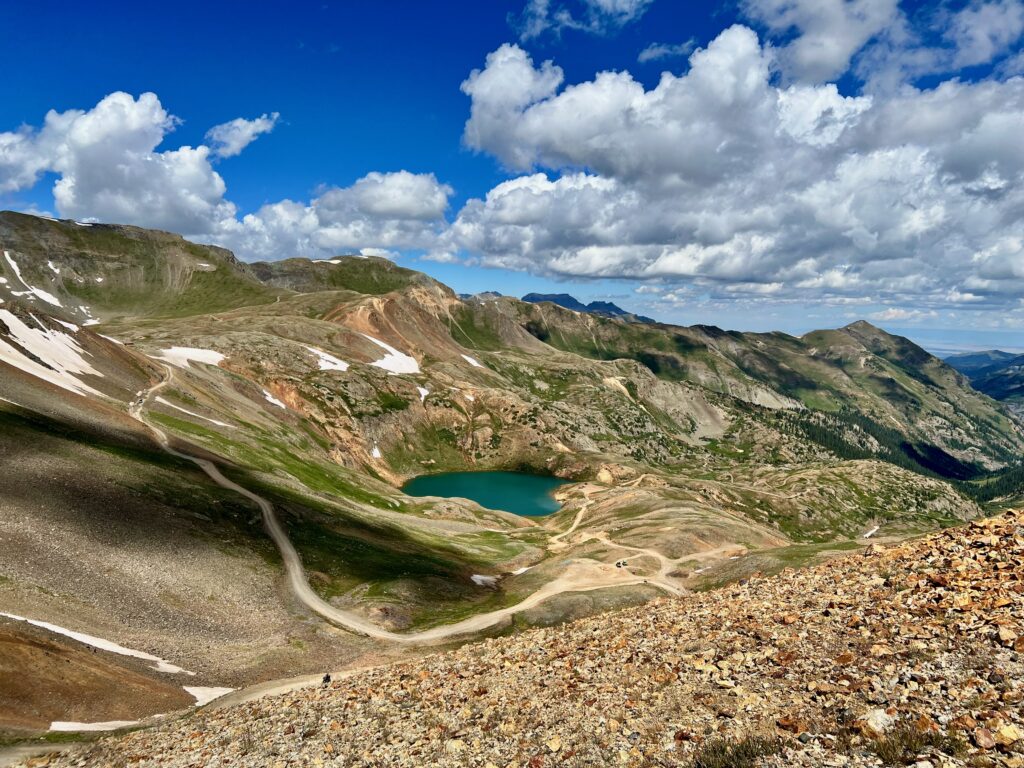
Diverse Terrains
Overlanding Colorado on the COBDR involves navigating varied terrains. These include vast high desert plains, steep alpine ascents, dense pine forests, rocky sections, tight switchbacks, and crystal-clear stream crossings. The route’s diverse topography ensures each journey segment is a unique experience, demanding adaptability and skill.
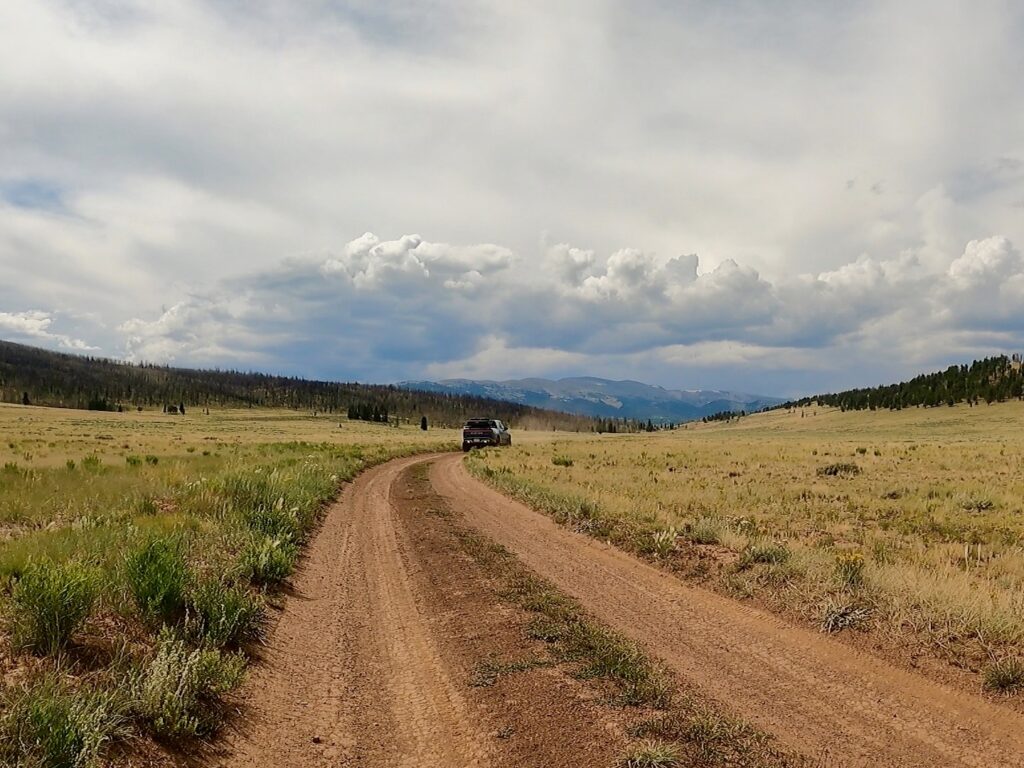
Vehicles for Overlanding Colorado
The COBDR, which has traditionally been popular among enduro motorcycles, now also appeals to a variety of off-road capable vehicles, broadening the scope of adventure. These vehicles include Side-by-Sides, Four Wheelers, Jeeps, and now electric trucks like my Rivian R1T. This fusion of technology and backcountry challenges enriches the COBDR experience, making it suitable for outdoor enthusiasts seeking exciting adventures in rugged landscapes.

Exploring History and Wildlife
The COBDR is more than just an off-road trail; it’s a story of exploration while overlanding Colorado. Along the way, adventurers will encounter remnants of historic mining towns like Animas Forks, where old structures and mine shafts tell tales of the gold rush era. Wildlife is abundant, with chances to see moose grazing in meadows, bighorn sheep navigating rocky slopes, and even the occasional black bear foraging in the forests. The COBDR offers a thrilling journey through stunning landscapes, weaving together the rich history of the Rocky Mountains with unforgettable off-road experiences.
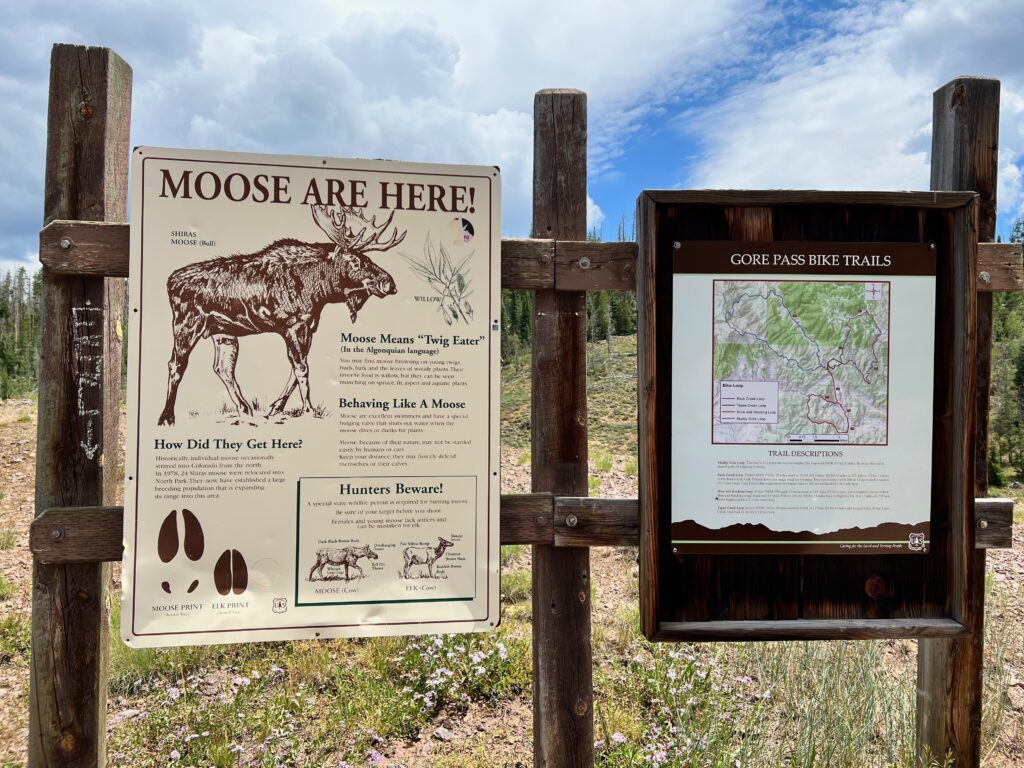
Preparing for the COBDR
I made it my goal to overland the entire 681-mile COBDR route alone in the wilds of the Colorado Backcountry. When I started planning, the question of whether I could accomplish this task loomed large. Taking on the COBDR solo would be a genuine test of my endurance and determination, especially without any real prior off-road experience. To set myself up for a successful journey, I knew I had to prepare for every potential challenge, focusing on navigation and survival skills.
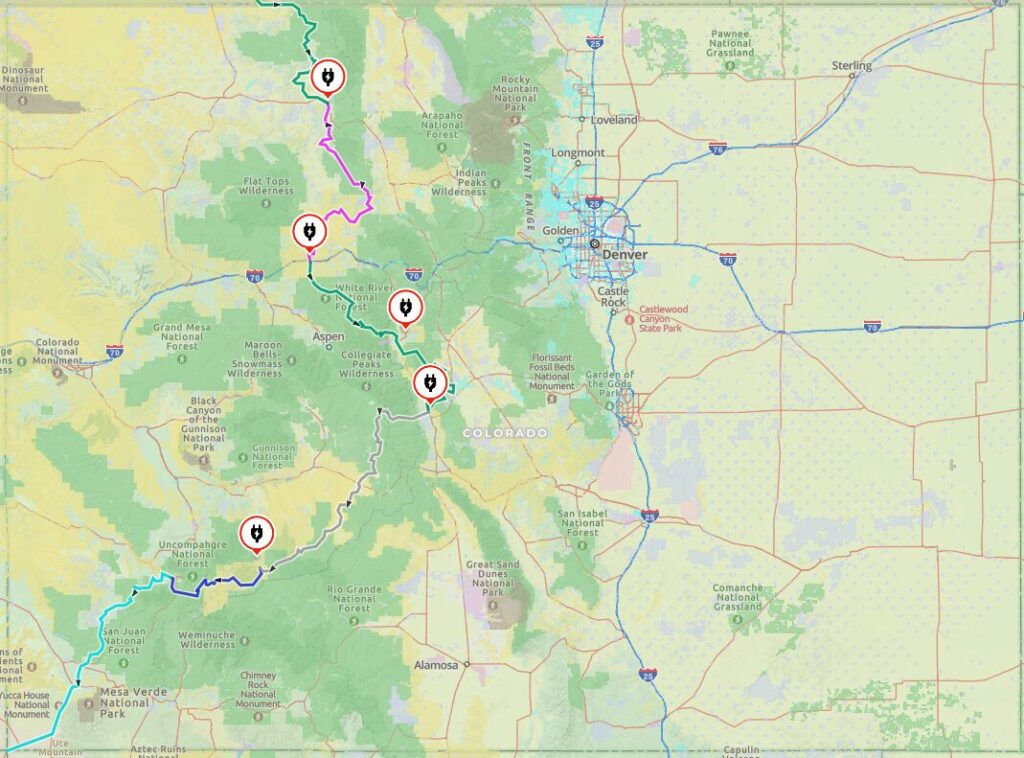
Charging Stops on the COBDR
Where could I stop along the route, while overlanding Colorado, to charge the R1T and prevent any risk of running out of battery life? This was a critical consideration. The electric infrastructure in remote areas is sparse, so careful planning was essential. Utilizing PlugShare, I researched charging stations along the Colorado BDR and identified key spots where I could recharge the Rivian R1T, ensuring I wouldn’t find myself stranded with a dead battery in the middle of the Colorado Backcountry.
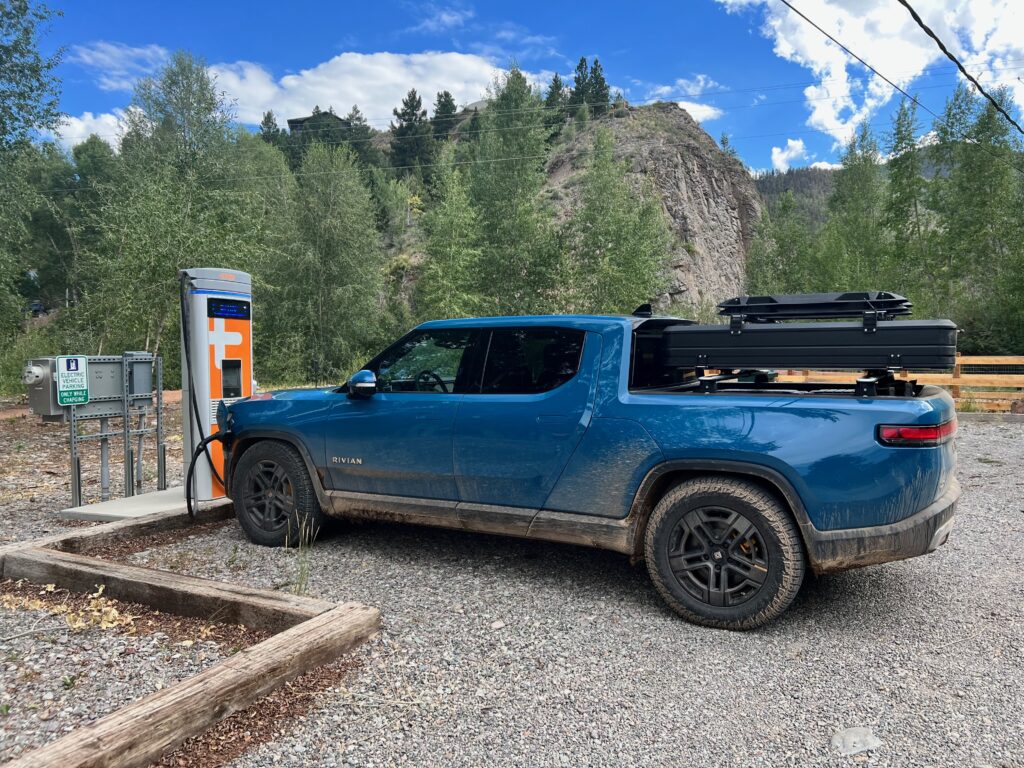
Emergency Preparedness
I made sure to be prepared for emergencies in areas with unreliable cell service by purchasing a satellite communicator. This device allowed me to send SOS and text messages for help, as well as check weather reports and keep in touch with family when I didn’t have cell service.
Equipping my vehicle with recovery gear, like traction boards, tow straps, and a shovel, was also important. Before starting my trip, I practiced using all of my gear to feel confident in handling any obstacles on the trail.
Additionally, I carried bear spray while dispersed camping to protect myself from bears, even though I never had to use it. It’s always better to be safe than sorry.
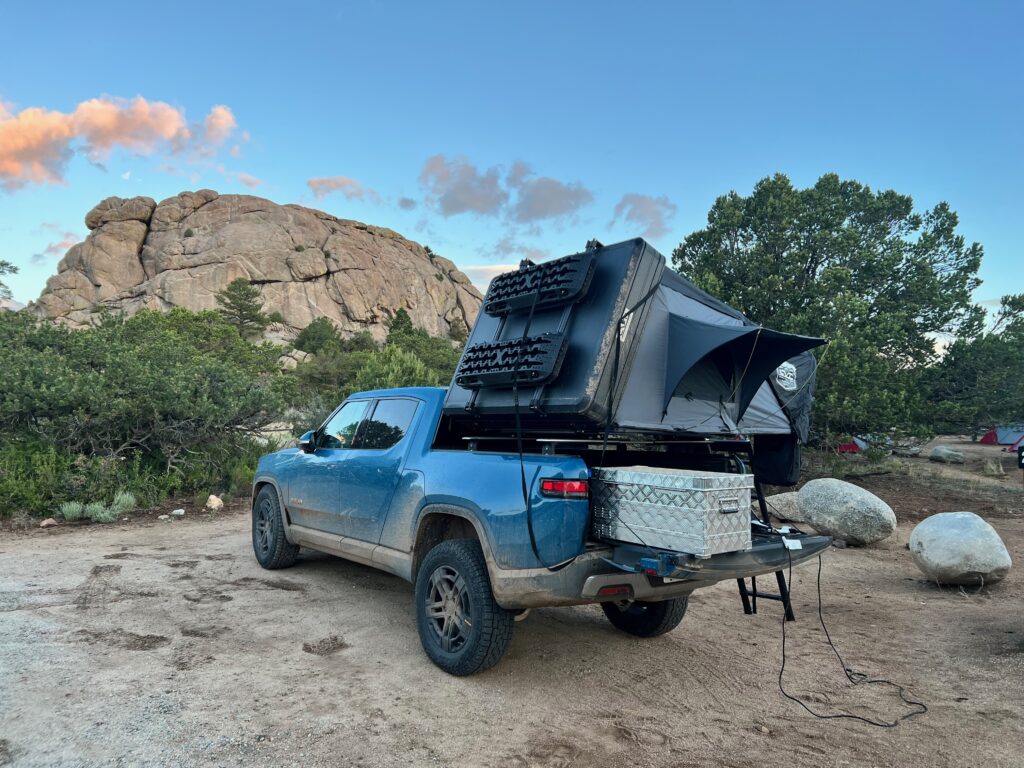
Finding Campsites
It is important to carefully plan where to camp each night for a successful adventure. I did thorough research on dispersed campsites and established campgrounds along the COBDR using apps such as Campendium and iOverlander. I focused on the proximity of each campsite to my route, distance from a charging station, and estimated range when arriving and departing from each site daily. Maintaining a flexible camping plan ensures that I can easily adapt to any changes in my schedule or route conditions.
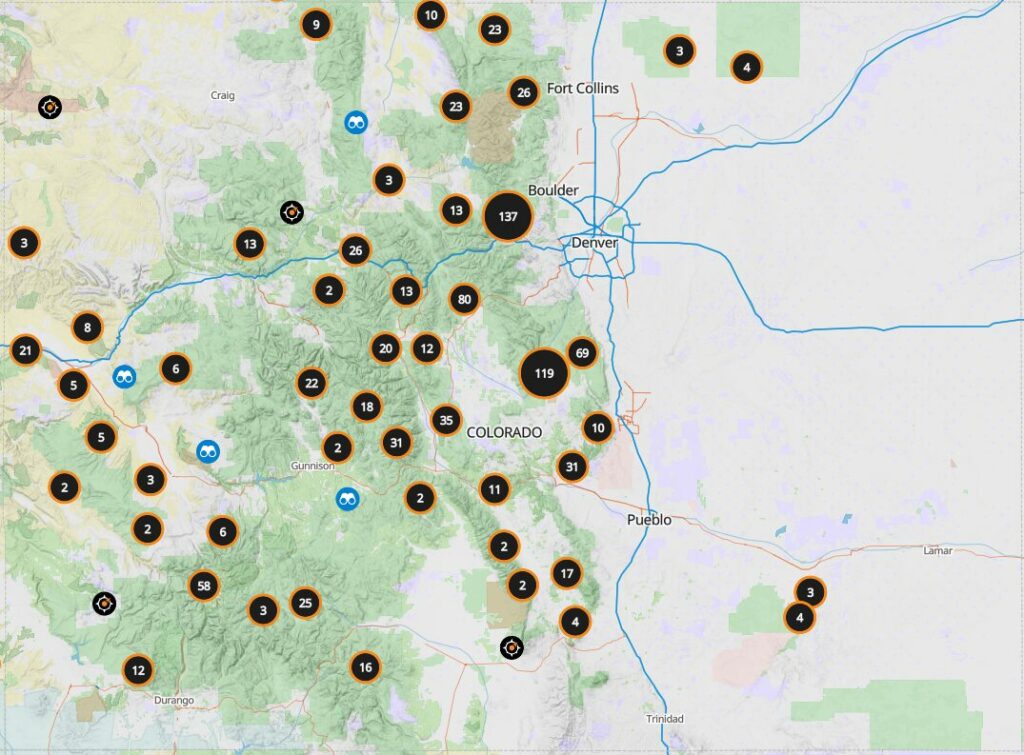
Planning the Route
To prepare for my six-day adventure overlanding Colorado, I spent a lot of time planning. I studied the trail routes, and watched YouTube videos to understand the challenges and highlights of all six sections of the COBDR. After carefully considering all available information, I chose to travel the Colorado Backcountry Discovery Route from North to South. I then downloaded the .GPX tracks from the RIDE BDR website and uploaded them into GAIA GPS. This allowed me to download maps offline and navigate in areas without cell signal.
Overview of Route Sections
The Colorado Backcountry Discovery Route (COBDR) is divided into six sections. Each section offers unique challenges and breathtaking scenery. Below is a summary of my experience while overlanding each section of the COBDR.
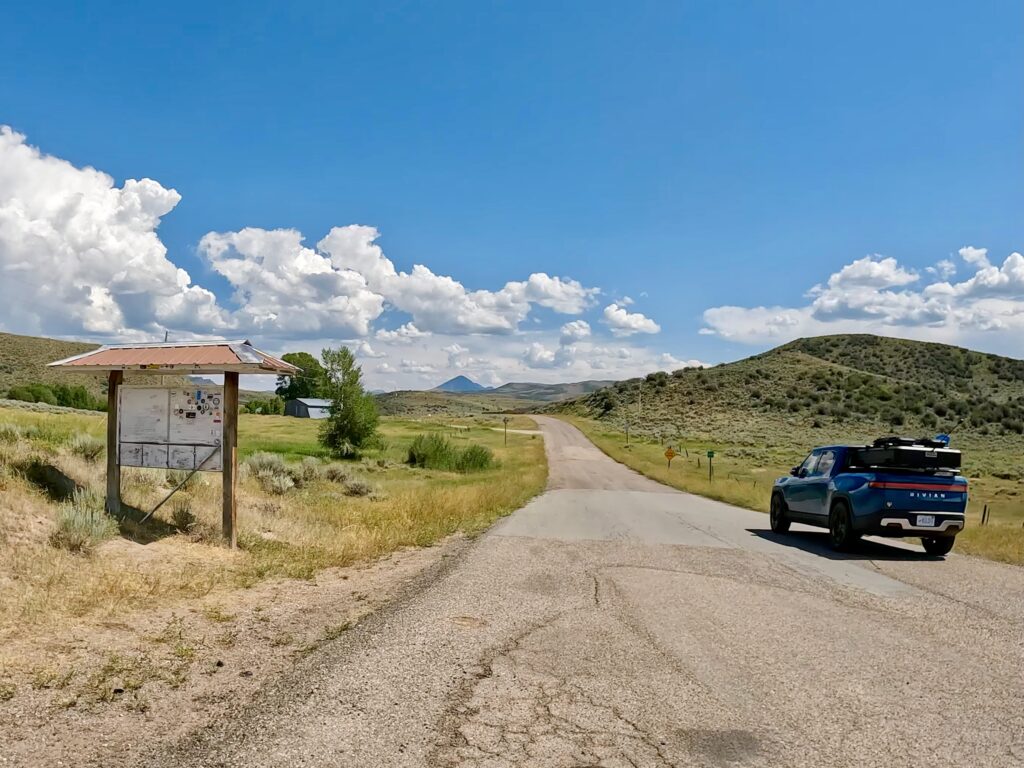
Wyoming Border to Steamboat Springs
Miles: 81
Description: I kicked off my electric adventure on the Colorado BDR at the Wyoming-Colorado border. By and large Section Six treated me to stunning aspen groves and picturesque landscapes. This section passed through the serene Medicine Bow-Routt National Forests. It also offers views of the scenic Hahns Peak and passes by Steamboat Lake State Park. This park would end up being my first camping stop on the COBDR. With its mild terrain, this section was the perfect introduction to overlanding Colorado before taking the other sections of the COBDR.
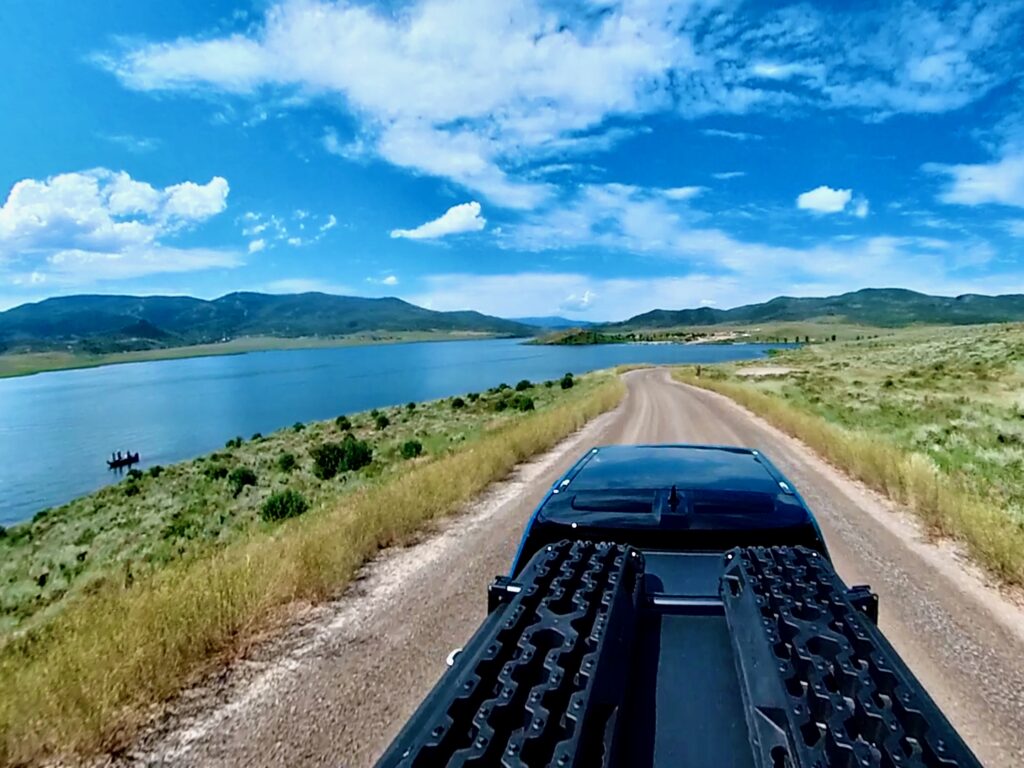
Steamboat Springs to Gypsum
Miles: 121
Description: Leaving the charming town of Steamboat Springs and venturing towards Gypsum, section five offered a variety of challenging terrain. As I passed through the lush Routt National Forest, I encountered rocky trails and enjoyed panoramic mountain views. One of the highlights was the beautiful views of the Stagecoach Reservoir with the sun glistening off of the water. The route also took me through scenic valleys and alongside sparkling rivers. I even had my first water crossing of the trip on this stretch, which added to the adventure. There were plenty of opportunities for dispersed camping and wildlife spotting. The combination of technical trails and serene landscapes made section five of the COBDR one to remember forever.
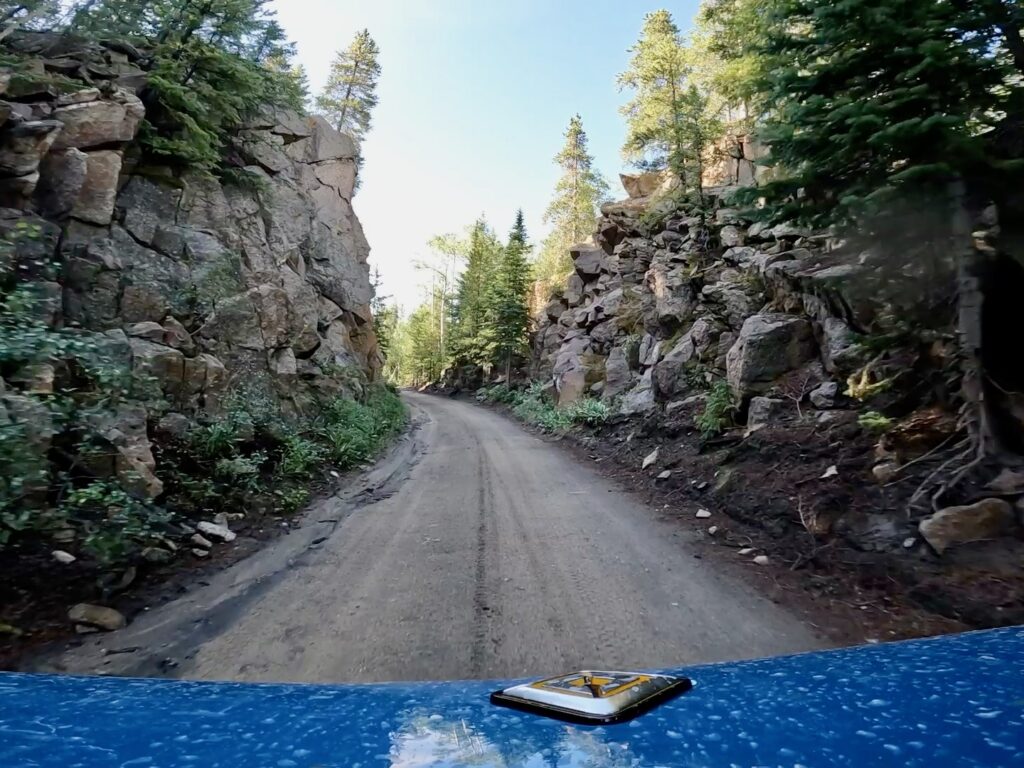
Gypsum to Buena Vista
Miles: 143
Description: Starting in Gypsum before ending in Buena Vista, Section Four of the Colorado BDR showcased awe-inspiring and varied terrain. This section marked my first significant technical test while ascending Hagerman Pass. The route also leads through Leadville, one of the highest incorporated cities in the United States, while offering a magnificent alpine landscape. This section seamlessly blends challenging trails with enchanting scenery, creating an unforgettable segment of the journey. Numerous options for both dispersed and organized camping are available along the route.
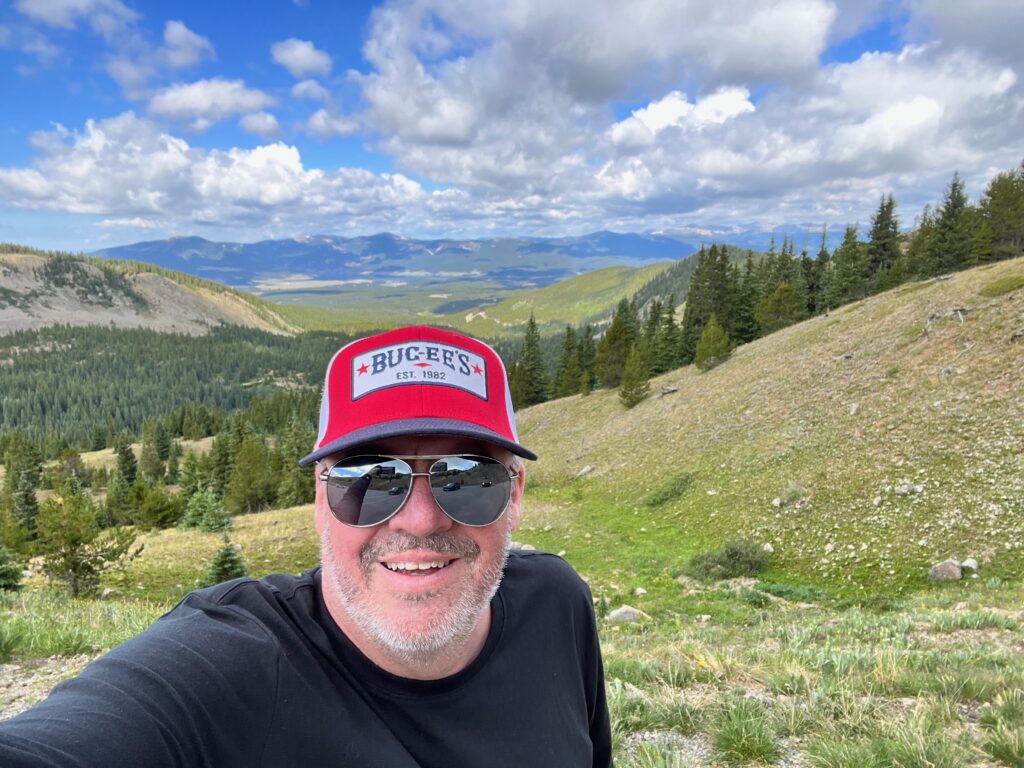
Buena Vista to Lake City
Miles: 145
Description: Section Three of the Colorado BDR is known for its stunning views and challenging terrain. It included some amazing mountain passes, such as Cottonwood Pass and Cumberland Pass, offering ample opportunities for adventure and exploration. Along the route, you’ll pass through historic towns like Tincup and Pitkin. During this section, I encountered a nasty thunderstorm with hail in the Gunnison National Forest, which provided me with an adrenaline boost until the storm passed. The challenges brought on by the unpredictable weather certainly made this section an unforgettable part of the COBDR for me.

Lake City to Telluride
Miles: 64
Description: On my 50th birthday, I traveled from Lake City to Telluride and experienced Section Two of the Colorado Backcountry Discovery Route (COBDR), which includes the famous Alpine Loop. The highlights of this section were the Great American Basin, Animas Forks, Cinnamon Pass, and California Pass. After touring the Alpine Loop, I took Ophir Pass on my way to Alta Lakes campground outside of Telluride, where I camped at over 11,000 feet. This section was the most scenic and memorable part of my journey in Colorado, combining challenging terrain with stunning alpine scenery. If you only have time to complete one section of the COBDR, this is definitely the one to choose.

Telluride to Four Corners
Miles: 75
Description: As my journey overlanding in Colorado on the COBDR was ending, I headed towards the famous Four Corners Monument. This is where Colorado meets Utah, Arizona, and New Mexico and is a great spot for a photo. While exploring the beautiful San Juan Mountains, I felt a little sad knowing it was my last day. Surprisingly, I found that Section One was more challenging than I expected, with steep climbs and descents. The terrain was a mix of rocky and muddy trails. However, the breathtaking views of the alpine trees made all the effort worthwhile. It provided a fitting and memorable end to the adventure.
Final Thoughts on Overlanding Colorado in a Rivian R1T
Thank you for allowing me to share my experience while overlanding Colorado’s 681-mile Backcountry Discovery Route in my Rivian R1T. Each section presented unique challenges, from navigating high-altitude mountain passes to remote trails leading to the Four Corners.
The R1T performed remarkably well, enhancing my overlanding skills and deepening my love for Colorado’s rugged wilderness. I believe every overlander should try the COBDR at least once, and completing it solo in my Rivian R1T made the experience even more unforgettable.
I hope my experiences on the COBDR inspire you to head out on overland adventures and explore Colorado’s incredible landscapes. Stay tuned for more stories on each section of the Colorado BDR. I’ll share additional details from my time on the COBDR before heading to Utah for more camping and overlanding adventures.
If you enjoyed this adventure, please share on social media and sign up for the newsletter for more updates.
ROAM FREE, EXPLORE MORE!

